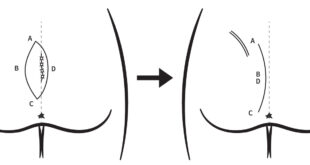Both the monophasic and biphasic defibrillators belong to the Automated external defibrillators (AEDs). They are used for the immediate treatment of cardiac arrest. Automated External Defibrillators are the standard of emergency care and are used for saving lives. The automated external defibrillators provide electric shocks to the heart to enforce its rhythm back to the normal rhythm and retain its normal beating pattern.
What is Monophasic Defibrillator?
The monophasic Defibrillator emits a type of shock that sends an electric current in uni or single direction from an electrode on the one side of the patient’s chest to the second electrode on the other side. During charging, the height of the voltage of the capacitor determines the amount of energy that will be delivered by the defibrillator pads.
The monophasic defibrillator waveform is a visualization of how current changes overtime during the Defibrillation. The monophasic Defibrillation waveform has a single peak. This one peak of the monophasic defibrillator waveform is very important and crucial in determining the success of Defibrillation. The peak current, together with the resistance of the body to the current, is called impedance, which is one of the components that form Defibrillation. The other component is the selected energy level. The amount of the current delivered is determined by both of these components that are selected energy level and impedance.
For the termination of fibrillation or abnormal rhythm, it is essential that the heart receives enough current. In a monophasic Defibrillator, the excessive-high peak currents are avoided because it can cause damage to the heart of the patient. The monophasic Defibrillator usually deliversa current as high as 360 joules. Search a large amount of current requires components for its generation and storage so that it can deliver the required amount of electric current through the electrodes of the Defibrillator. The monophasic defibrillators were usually bulkier because they delivered high current.
What is Biphasic Defibrillator?
The Biphasic defibrillators emit a current that flows in two directions that is bidirectional current flow. It is opposite to the monophasic Defibrillator in which current flows in only one direction. The biphasic defibrillators emit bidirectional current; the direction of this current flow reverses in the Defibrillation cycle at some point during the discharge. In the biphasic Defibrillator, the pulse consists of a positive and negative peak.
The current flows from electrode A to B during the positive peak, and the current flows from the electrode B to A during the negative peak. These devices can measure the resistance of the body to the current called impedance and then adjusts the voltage level accordingly. The factors such as current, direction, and duration of energy delivered determines the shape of the current delivered. The biphasic defibrillators adjust according to the impedance of the patient and therefore increases the chance of survival for both the high and low impedance patients. Another factor that makes the biphasic Defibrillator more important is its adult and child mode.
It helps the rescuers to adjust the model according to their needs. This increases the efficacy of the procedure. The biphasic defibrillators are able to maintain the shape of their waveform and duration irrespective of the impedance. One of the biggest advantages biphasic Defibrillator has over the monophasic Defibrillator is its ability to utilize much lower current and joules. At 120 -200 joules, the biphasic Defibrillator provides the same effect as provided by the monophasic Defibrillator at 200 -360 joules. The biphasic defibrillators have higher efficacy than the monophasic Defibrillator. It provides better results at lower energies than the monophasic Defibrillator. It also decreases the post-shock complications like skin burn or myocardial dysfunction. The biphasic defibrillators are more efficient, accurate, and are easier to use.
Difference between Monophasic vs. Biphasic Defibrillator
| Monophasic Defibrillation | Biphasic Defibrillation |
| The flow of the current is unidirectional | the flow of the current is bidirectional |
| it utilizes more electrical energy | it utilizes less electrical energy |
| It causes more skin burns | it causes few skin burns |
| it produces more myocardial damage | it produces less myocardial damage |
| the success rate is 60% | the success rate is 90% |
Monophasic vs. Biphasic Defibrillator Energy level:
The biphasic Defibrillator uses less energy than the monophasic Defibrillator. The biphasic Defibrillator at 120 -200 joules gives the same result as the monophasic Defibrillator at 360 joules.
Monophasic vs. Biphasic Defibrillator Dosage:
The pediatric dosage of the monophasic and diphasic defibrillator initial starts with 2-4 joules per kilogram. Then it is followed by 4 joules per kilogram. The dose of monophasic and biphasic Defibrillator for the pediatric can be increased up to 10 joules per kilogram. The adult dose of monophasic Defibrillator initially starts at 200 joules, which is then followed by 300 joules and can be increased up to 360 joules. The adult dose of biphasic Defibrillator initially starts at 120-200 joules and can be increased up to the manufacturer’s recommendations.
 Health & Care Information
Health & Care Information 


